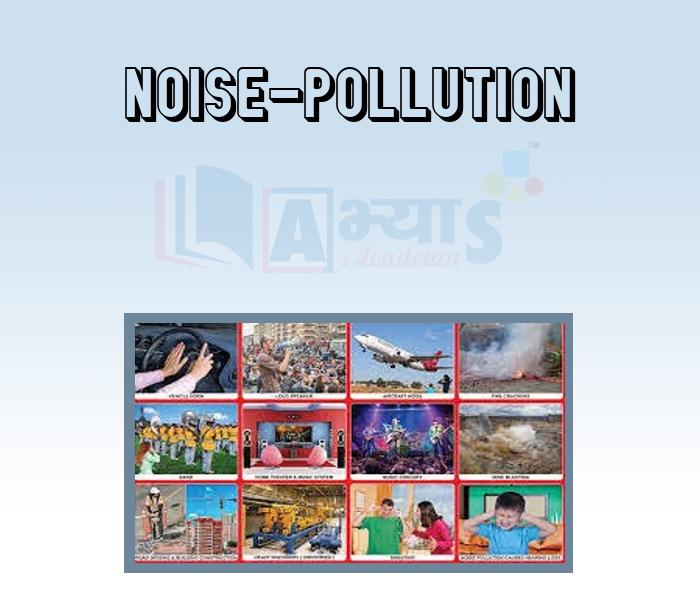Noise-Pollution










Noise-Pollution
Noise Pollution: Noise is generally an unwanted sound, or a sound with which the modern civilisation would not put up. Noise produces several adverse effects on the quality of man's surroundings, and is therefore, considered to cause pollution of the environment. The loudness causes physical discomfort and temporary or permanent damage to hearing., Noises above 85-90 decibels are considered dangerous. The WHO has- recommended a tolerance limit of 45 decibels for noise level at night and 55 decibels for daytime
Prolonged exposure to higher noise levels leads to hearing loss and nervous and emotional tension.
Noise Control Measures: The means of noise control are:
(1) To manipulate the source so as to reduce the noise at its origin
(2) To interrupt the path of transmission
(3) To protect the recipient
Legislation and public policy are essential. Standards for noise control measures should be set for industry and community. The path of the sound can be interrupted by using various materials that absorb the sound energy. Acoustic materials and mufflers can also be used.
Anti-Pollution Measures: Pollution is inevitable and measures to prevent pollution or reduces effects have grown rapidly in recent times. Action against pollution takes a variety of forms. Most countries including India have anti-pollution legislation. Recycling of materials may be done; for example glass bottles, newspapers, metals from old vehicles can all be recycled. There can be research into the use of cleaner, renewable sources of energy, for example, solar, wind and tidal energy. Modification industrial processes to make use of waste materials or to render them harmless before discharg another anti-pollution measure.
Students / Parents Reviews [10]
About Abhyas metholodology the teachers are very nice and hardworking toward students.The Centre Head Mrs Anu Sethi is also a brilliant teacher.Abhyas has taught me how to overcome problems and has always taken my doubts and suppoeted me.

Shreya Shrivastava
8thOne of the best institutes to develope a child interest in studies.Provides SST and English knowledge also unlike other institutes. Teachers are co operative and friendly online tests andPPT develope practical knowledge also.

Aman Kumar Shrivastava
10thIt was a good experience with Abhyas Academy. I even faced problems in starting but slowly and steadily overcomed. Especially reasoning classes helped me a lot.

Cheshta
10thA marvelous experience with Abhyas. I am glad to share that my ward has achieved more than enough at the Ambala ABHYAS centre. Years have passed on and more and more he has gained. May the centre flourish and develop day by day by the grace of God.

Archit Segal
7thBeing a parent, I saw my daughter improvement in her studies by seeing a good result in all day to day compititive exam TMO, NSO, IEO etc and as well as studies. I have got a fruitful result from my daughter.

Prisha Gupta
8thMy experience was very good with Abhyas academy. I am studying here from 6th class and I am satisfied by its results in my life. I improved a lot here ahead of school syllabus.

Ayan Ghosh
8thIt was good as the experience because as we had come here we had been improved in a such envirnment created here.Extra is taught which is beneficial for future.

Eshan Arora
8thAbhyas Methodology is very good. It is based on according to student and each child manages accordingly to its properly. Methodology has improved the abilities of students to shine them in future.

Manish Kumar
10thIt has a great methodology. Students here can get analysis to their test quickly.We can learn easily through PPTs and the testing methods are good. We know that where we have to practice

Barkha Arora
10thMy experience with Abhyas academy is very good. I did not think that my every subject coming here will be so strong. The main thing is that the online tests had made me learn here more things.
